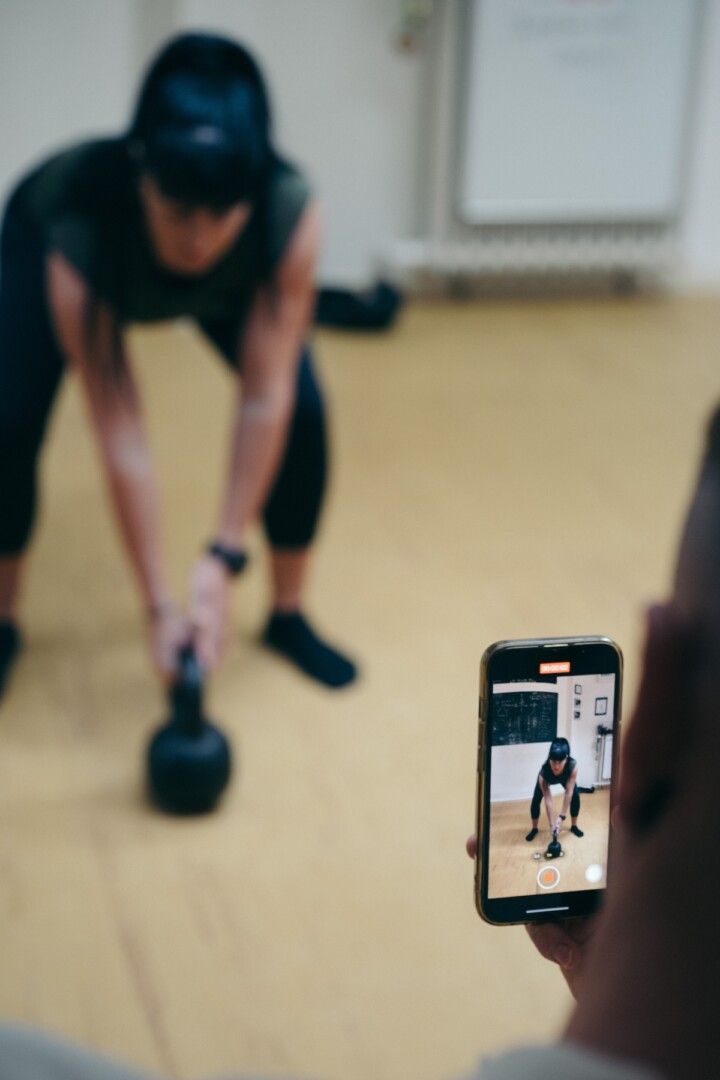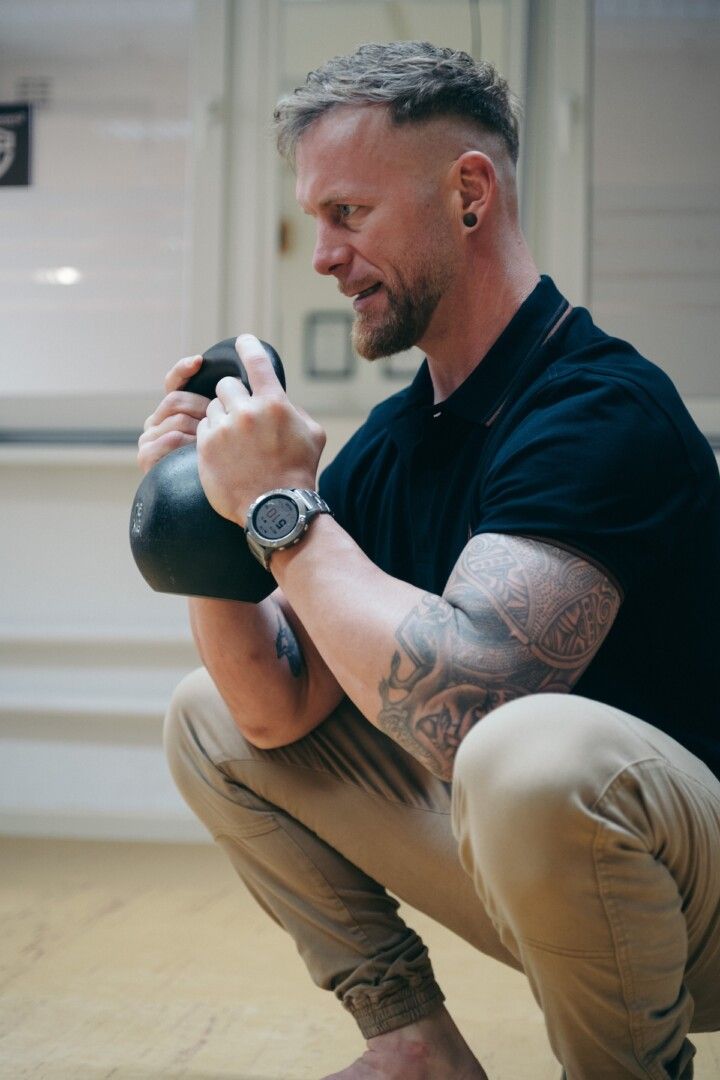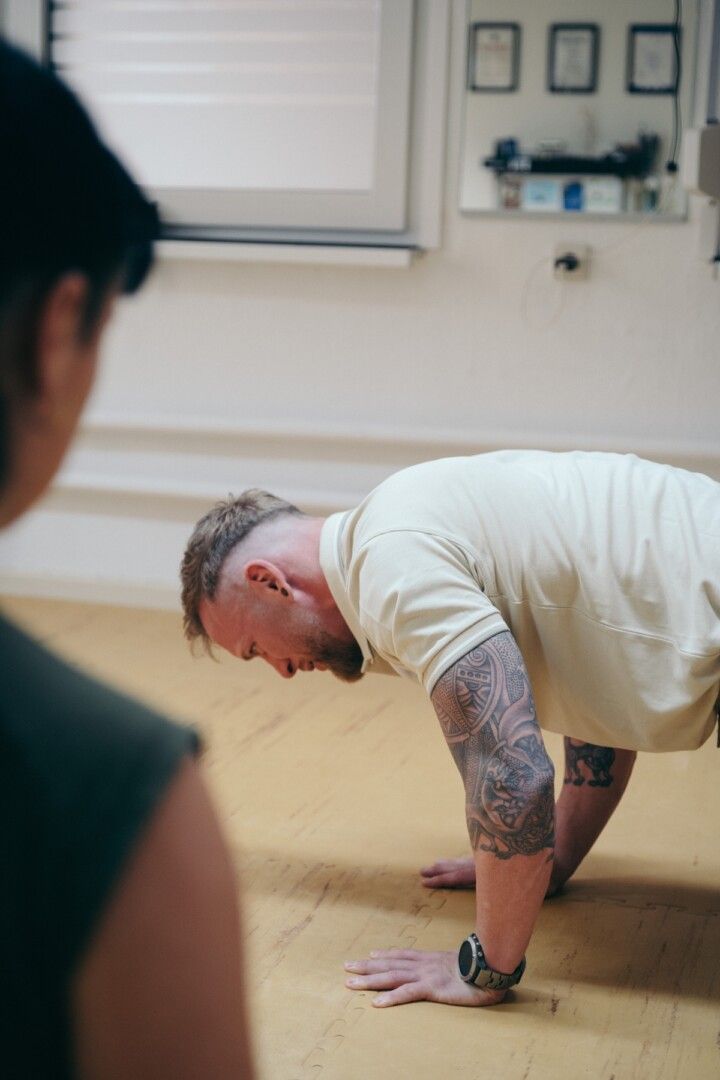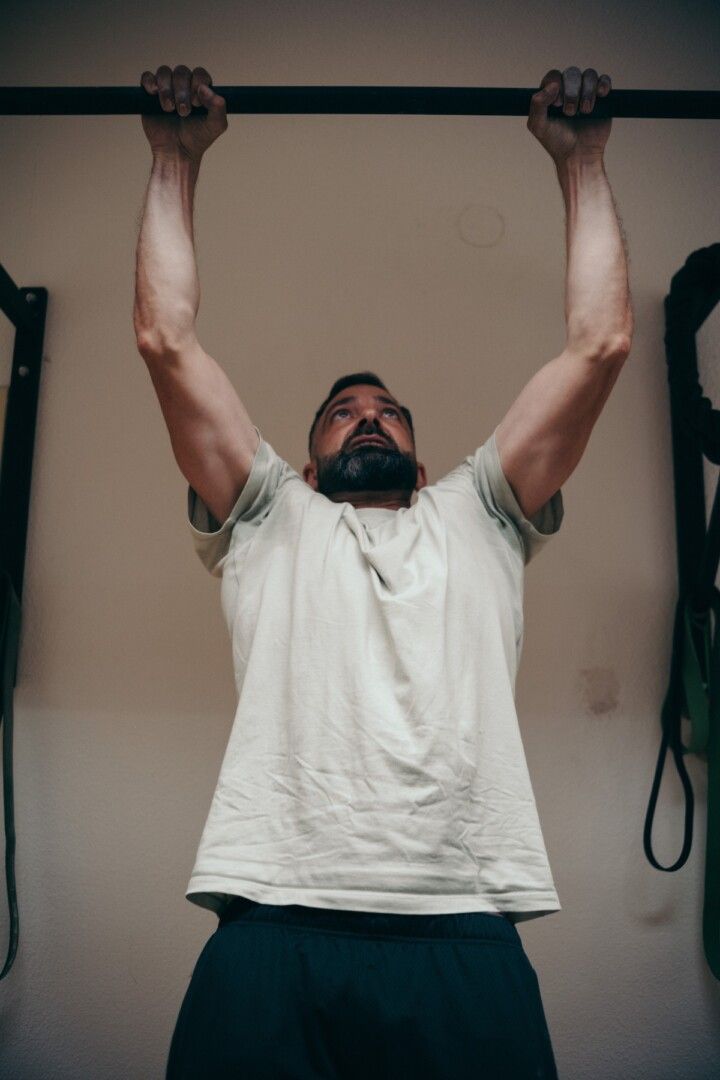The Principle
Functional training has been around as a training principle for a very long time – e.g. in the military, in physiotherapy or in traditional sports. „Hip“ However, it only became mainstream in fitness later on.
In the 1990s, physiotherapy and competitive sports began to focus more strongly on ‘functional movement patterns’ as a means of preventing injuries. Through programmes such as bootcamps, crossFit, kettlebell programes or TRX The term entered the fitness sector in the early 2000s. Training with kettlebells, body weight and free weights became popular here. In Europe and in the major fitness chains, „functional training" between 2010–2015 then really became a trend – often in the form of Functional Areas with kettlebells, TRX straps, medicine balls or battle ropes.
What exactly means functional ?
The word functional function „Funktion“ = Task / Purpose. The muscles are used as originally intended – that is, in natural movement patterns and not in isolation or artificially guided as in devices, machines or electrical muscle stimulation (EMS).
Functional movements are based on the natural tasks performed by humans.
Our bodies are not designed for sitting for long periods of time, exercising on machines with predetermined movements, or standing and walking on hard asphalt in moulded shoes. Instead, they are designed for movements that we have always needed in everyday life or in nature: walking, carrying, lifting, pushing, pulling, squatting, turning, jumping or climbing. We find these patterns, for example, in lifting a box, carrying a child, standing up from a squatting position, chopping wood, gardening or climbing over an obstacle.
What is functional training?
The idea behind it: Humans were evolutionarily Hunter, gatherer, porter, climber – our bodies are ‘programmed’ for these movement patterns. Functional training replicates these patterns, thereby strengthening the muscles and structures as nature intended. It is a training approach that trains movements – not just individual muscles. It is about the interaction of Strength, stability, mobility, balance, coordination and economy of movement.
Instead of using equipment that artificially guides movements, the focus is on free exercises that allow you to use your body in its natural chain. Tools replace everyday objects: kettlebells, barbells, TRX, medicine balls or just your own body weight.
In functional training, these movement patterns are specifically imitated and practised in preparation – including deadlifts, squats, push-ups, pull-ups, rotational exercises and much more. This means that muscles do not work in isolation, but in conjunction with each other, as nature intended. This strengthens strength, stability, mobility and coordination in equal measure – and makes us fitter and more resilient for the challenges of everyday life. In training, this means that a movement is functionalif you want to support a natural bodily function. In other words, movements that you need in everyday life, in sport or for stability – not just isolated muscle work.
An example makes it clear:
Not functional: Bicep curls on the machine → only the biceps are moved in isolation.
Functional Deadlift with kettlebell → works the legs, back, core and grip strength simultaneously; the movement pattern is similar to lifting a heavy box in everyday life.
Why should you do functional training?
Because in everyday life and sport today, the body almost never works in isolation. The body's structure deviates from its balance in a wide variety of situations, so we have to work on these weaknesses again. Muscles are therefore not ‘individual players’, but always work as a team in the so-called muscle chains. Functional training forms precisely this natural interaction – just as our bodies function naturally. Functional training not only strengthens individual muscles, but above all the interaction of the entire body: a stable core (trunk stability), coordinated muscle work and the quality of natural everyday movements – such as lifting, carrying, turning, pulling or pushing. This makes you more efficient in everyday life, prevents injuries and allows you to move in a healthier, more efficient and more powerful way.
- health: Strengthens joints and ligaments, stabilises the core, corrects imbalances and prevents physical tension.
- suitability for everyday use: Lifting a crate of water, carrying a child or climbing stairs – all of these things are easier.
- Sporting performance: Increases explosive power, agility and coordination – whether in amateur or professional sports.
- Body awareness: You will learn how your body really works and develop a better sense of healthy, confident posture and clean movements.
Important: The decisive factor is how these movements are performed. Many people first have to relearn functional patterns because, as described above, their body structure often deviates and important muscles have deteriorated due to lack of exercise or have been trained suboptimally. If exercises are performed incorrectly, the wrong muscles take over, which can lead to incorrect strain. This quickly puts the joints and spine in a suboptimal position. That is why proper technique is the key to healthy and sustainable training.
If you want to learn more, write to me. >>Kontakt<<
Sporting regards,
Falk




